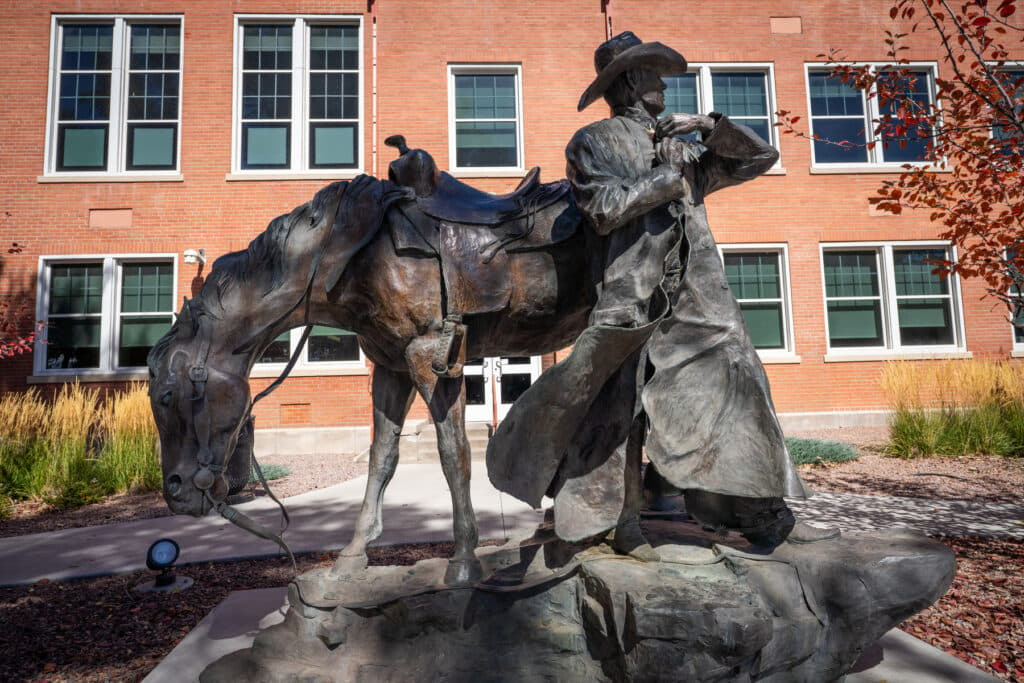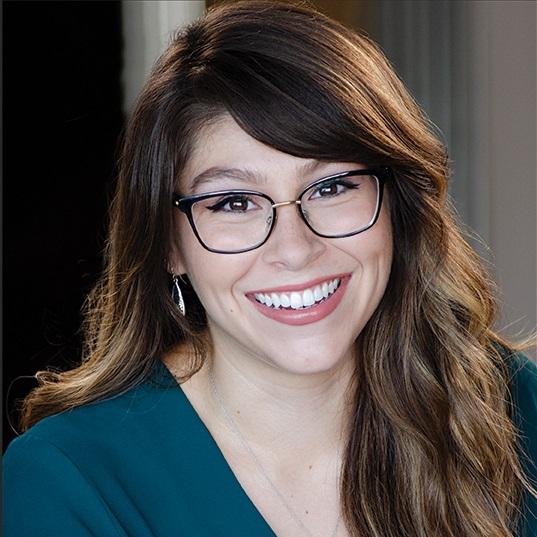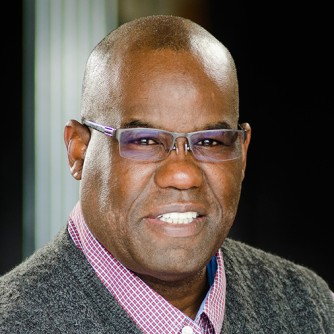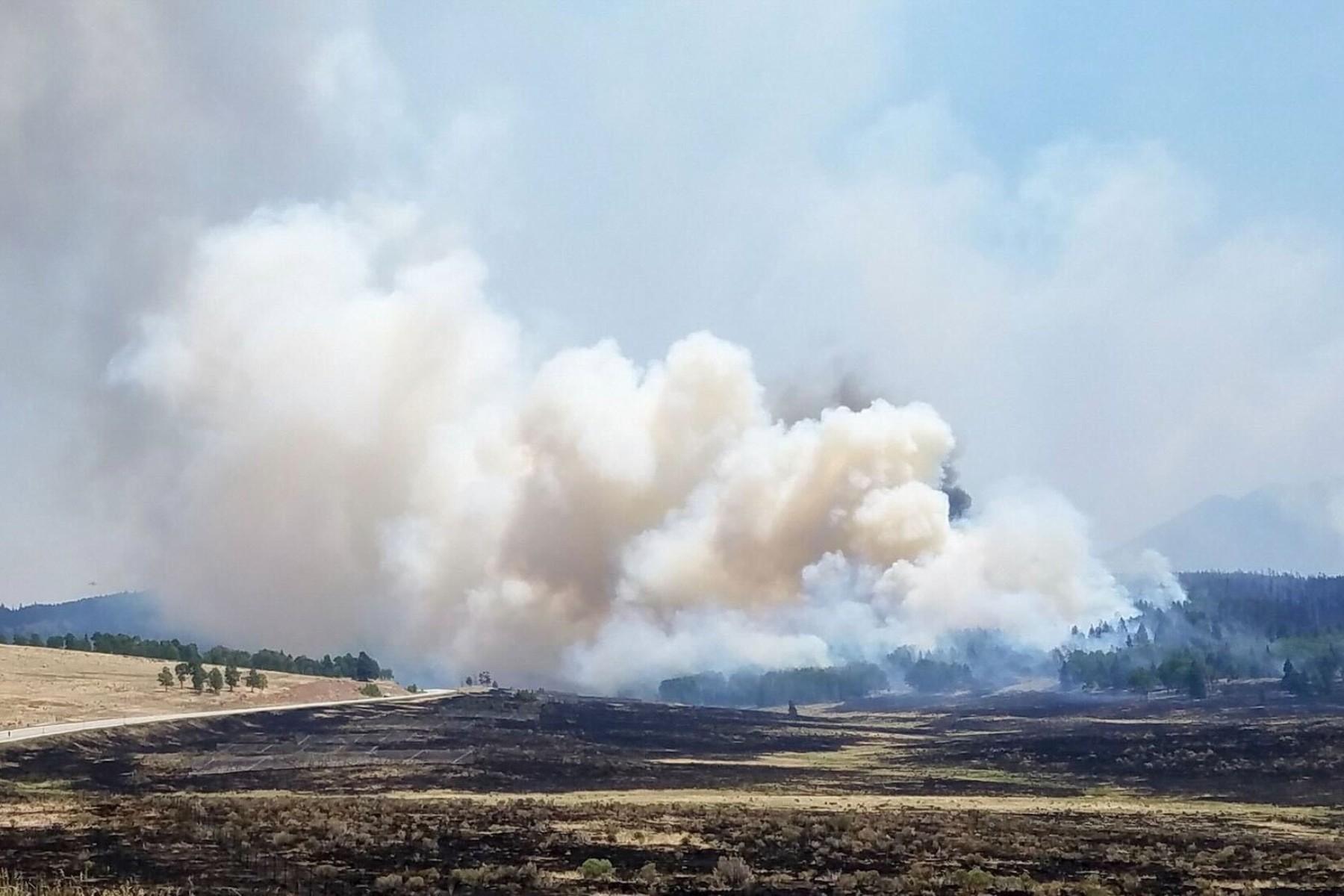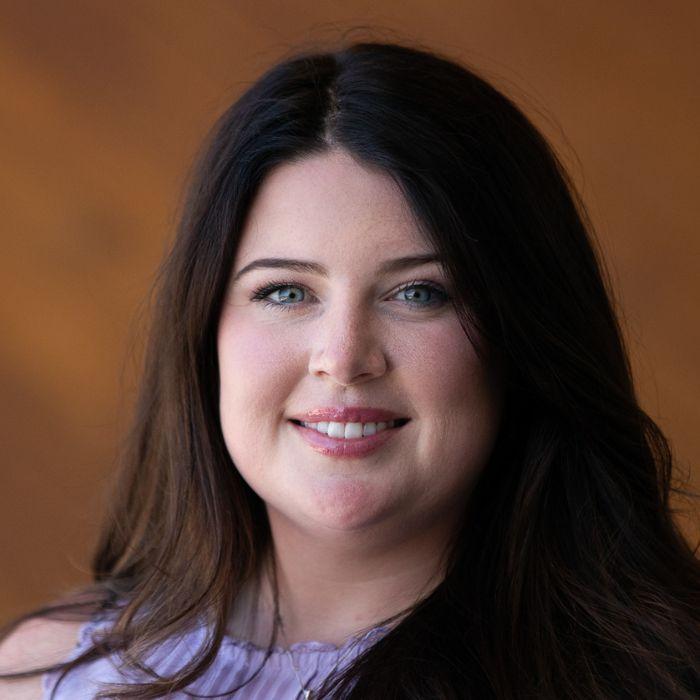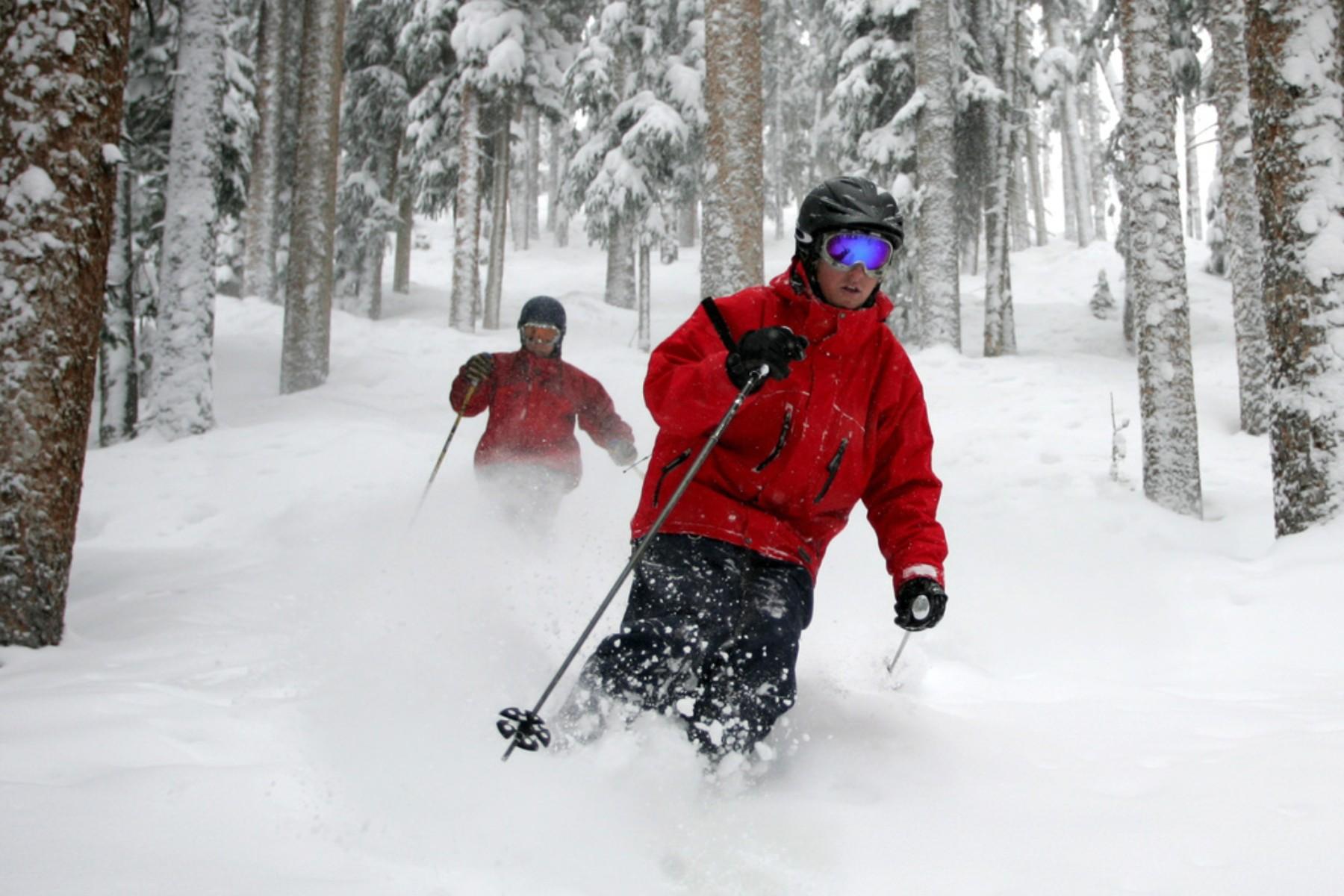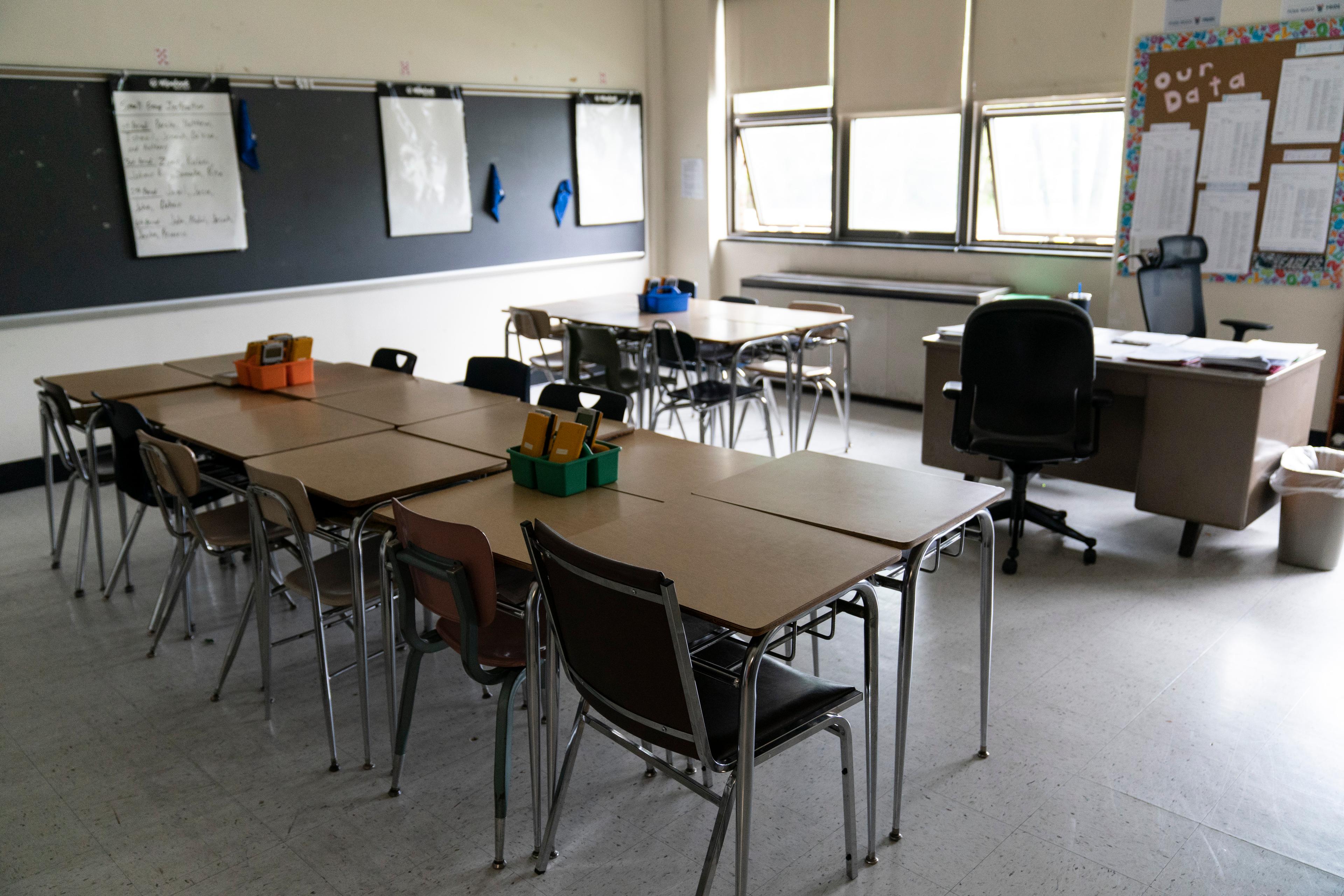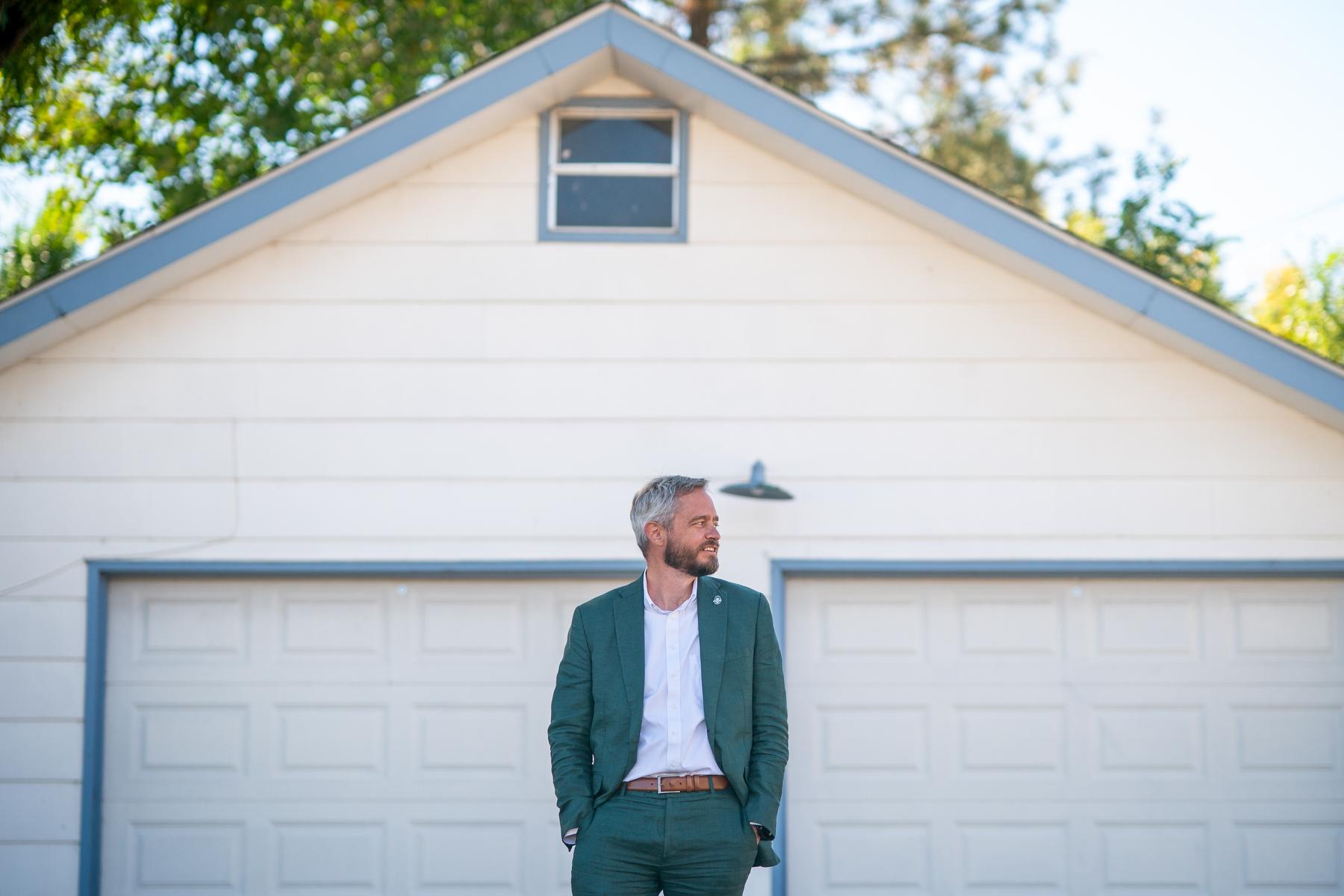
It stands to reason that a university in the San Luis Valley would be the first in Colorado to be designated a "Hispanic Serving Institution." The valley's Hispanic heritage runs deep. But Adams State — in Alamosa — is losing the money that came with the title. David Tandberg leads the school of around 3,000 students.
“There is a lot of pride in the community around Adams State and its Hispanic Serving Institution status, and I think people have seen the benefits of that,” Tandberg said in an interview with Colorado Matters Senior Host Ryan Warner. “And let's be real, the programs that we've been able to implement, the offices, the services, there for all students, race does not matter at all. And so every student at Adams State has benefited from us being an HSI.”
Still, Tandberg says this is the type of obstacle that the university rises above, time and time again. Among the school’s innovative approach to serving students in the San Luis Valley is to offer automatic enrollment to all graduating high school seniors or those who’ve obtained their GED.
“We never want to have a barrier between our valley kids and their dream of a university education,” said Tandberg.
He also discussed his time attending Adams State as a student, living just a short distance from where he now serves as president of the university.
This interview has been edited for length and clarity.
Ryan Warner: We are going to talk about the site you've chosen for this interview in front of a garage, just off campus. But as I drove into Alamosa, I saw word that Hispanic Serving Institutions will no longer be able to count on the federal funds that they have competed for in the past. What do you know, what does it mean for Adam State?
David Tandberg: Well, it means a great deal to Adams State. We were the first federally-designated Hispanic Serving Institutions, at least among the universities in Colorado. And that's allowed us to have consistent federal support to innovate, to better serve our students. And that means a lot when you're a small rural institution. You don't have a lot of budget flexibility to do some of the things that you'd want to do to innovate. And it's allowed us to do that. And so some of the best programs, offices, and policies on campus originated through the Hispanic Serving Institution program.
Warner: What's an example of that?
Tandberg: Like our “One Stop,” our “Student Success” services, those things we were able to test out with federal funds, find that they work, and then continue them beyond the life of the grant.
Warner: Meaning you retain students, I gather.
Tandberg: Yeah. We retain more students. We provide a better experience for them. And so it really pays itself.
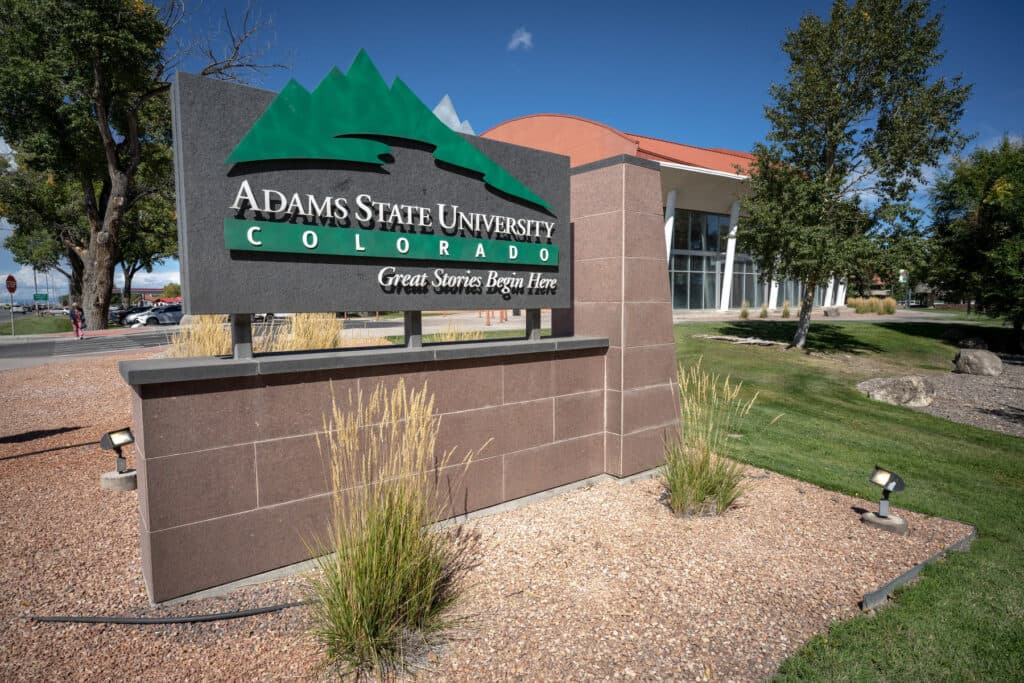
Warner: I noticed in Alamosa County, pretty overwhelming support for Mr. Trump in the last election. Do you think this is what the community wanted?
Tandberg: I don't think you can draw a direct line. There is a lot of pride in the community around Adams State and its Hispanic Serving Institution status, and I think people have seen the benefits of that. And let's be real, the programs that we've been able to implement, the offices, the services, there for all students, race does not matter at all. And so every student at Adams State has benefited from us being an HSI.
Warner: That is to say, if you learn how to support and retain students, maybe that starts with the Hispanic Serving Institution money, but that is a tide that raises all boats, in other words.
Tandberg: Yes to that, but also the money that is spent goes to support every student. There is no screening or anything like that. And so immediately, because we have that grant, every student benefits, and then yes, it raises all boats.
Warner: What is the sum that you know you'll be out and where will that money come from if you want to continue this kind of experimentation?
Tandberg: The grants are usually five-year grants, anywhere from a million dollars to a few million dollars. And we've had one, two, or three simultaneously. We were able to close out two grants that were ending anyways, but we were in the second year of a five-year grant, and that's going to end within months.
Warner: I just want to go back to this question that Trump won here, and I wonder how you square both the embrace you say of the university with the fact that there are undoubtedly people who think you shouldn't have gotten funds for this.
Tandberg: Yeah, undoubtedly there are. You know, what I've noticed in the national conversation is there's been a growing critique of higher ed nationally, when you talk about higher education, right, as a concept. It's a much different thing when you have a university in your neighborhood, bringing the economic development, the increased educational attainment, the sports teams, the programming, the education. So you can love something locally and then have a national politics that you have an opinion about, add those don't necessarily have to square
Warner: Let’s get to why you've chosen this rather unremarkable, to the eye, garage, two-car garage, vinyl covering, I think, what is this place president?
Tandberg: So, when I was an undergraduate, I didn't have a lot of money. I was a Pell Grant student, and one way that I decided to make college affordable and save money was, I lived in this garage for two years. As you're describing it, you can see a little window right at the top of the ease.
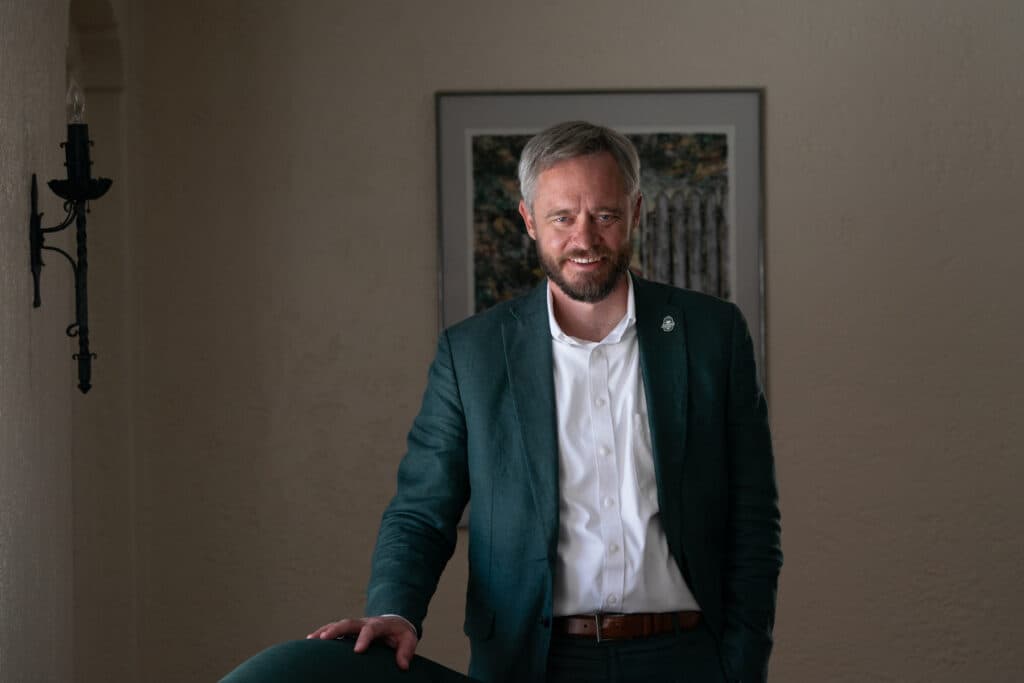
Warner: Sort of a dormer.
Tandberg: Yeah, it has an unfinished low ceiling, second level. And that's where I lived. And you can see it comes to a peak in the middle of the peak. If I bent my head over, I could stand up. But then it went down to about two feet high on each side.
Warner: How many times did you hit your head?
Tandberg: Every day. And so I had grown up part of my life working construction, so I asked him, if I build my own little place, a lot of the materials I sourced from what was being thrown out at construction sites. And so I constructed a little place to live there. It had no heat. My water was from a garden hose that I used to fill a 50-gallon drum. I had a camp stove that I cooked on, and I lived there for two years. Frankly, it sounds like a “woe is me” story. It wasn't; I actually kind of loved it. It was my own little place that I made my own. Absolutely, it was freezing in the winter. I would turn on my camp stove, a Coleman stove, you know, run it and it would warm up the place, turn it off, and jump in my sleeping bag at night and then wake up to sub-zero temperatures.
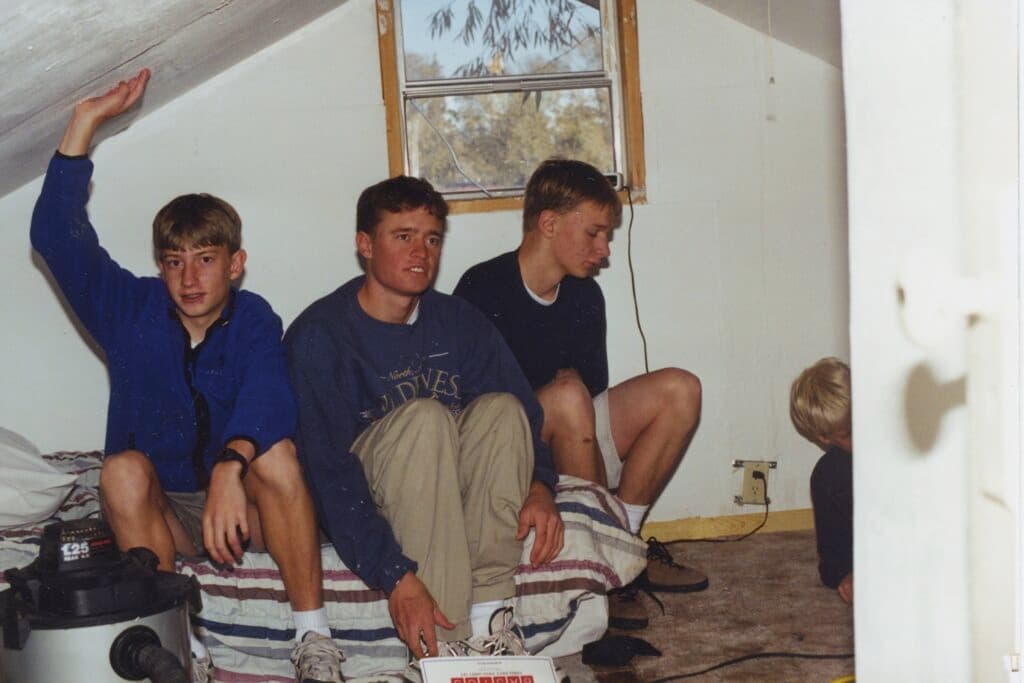
Warner: That doesn't sound like a fire hazard at all.
Tandberg: No, no, absolutely not. And, I was able to move out of it because I had professors that had kind of seen some academic talent in me that I hadn't seen in myself. And as they worked with me and inspired me, and I started to believe in what they were telling me, my grades improved. And I got scholarships, and I moved into a rented house with some friends. But until that time, this is where I lived, a few blocks down from the university.
Warner: And a few blocks from the president's house, you now call home. And I understand when you walk out of the President's house on your way to work each morning, your short pedestrian commute, you look left.
Tandberg: Yeah, I look left because you can see the front of this garage a few blocks down. And it can be an emotional moment for me because it is on the same street. And my life, in many ways, took a new path the moment I entered that garage. I didn't know it at the time, but that was really the beginning of a whole different path in life that went full circle with a lot of stops along the way back to the same street, 2nd Street in Alamosa. And I looked there, and it reminds me of that journey. But more importantly, there are students facing much more significant challenges, to be honest. You know, my parents have a home. I was never without a place I could go. But we have students who are truly housing insecure, food insecure, that have faced significant challenges their whole life. And we have that same starting point of Adams State.
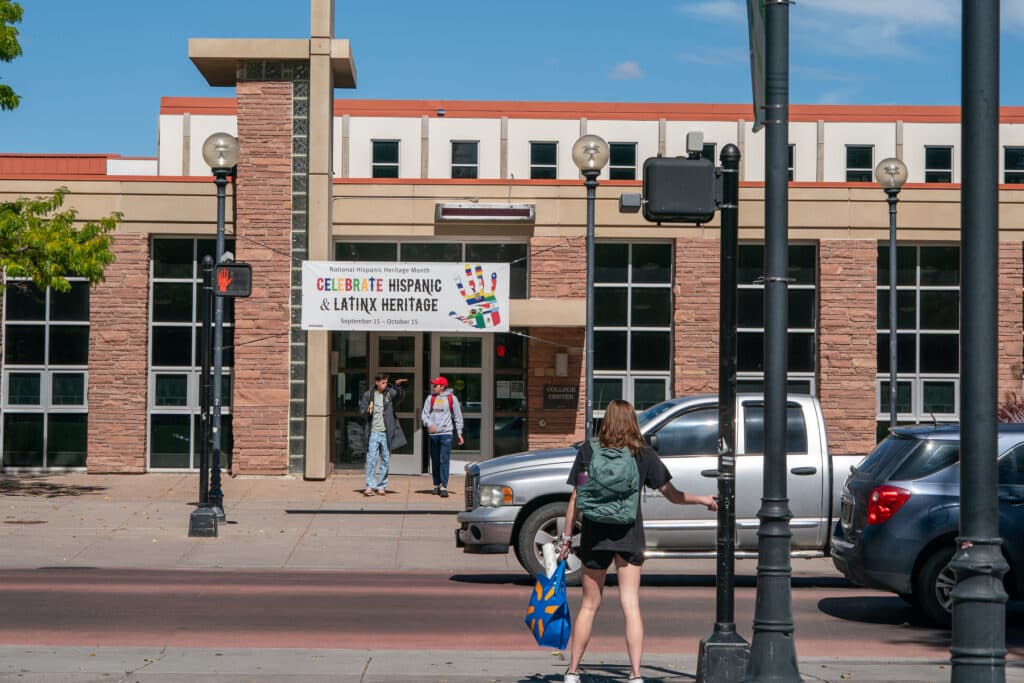
Warner: I think about how, when the state budget gets tight, funding for higher education is often the first to go. I'm thinking of the announcement we discussed around funds for Hispanic Serving Institutions. Do you worry that the opportunities available to you then may not be as plentiful for those struggling now?
Tandberg: Yes, I worry, but I also have a lot of hope. There's something I talk about a lot and others about the San Luis Valley, which has a very unique history relative to the rest of Colorado. And it's something I like to call and others call it the acequias culture. And when the first settlers came to the valley, it was arid. It was very difficult to sustain life. And they collectively looked at those incredibly challenging circumstances and they came together and they dug the acequias, the ditches that brought water, but more importantly, brought life to the valley. And that's been the pattern of the Valley. And even Adams State, we've never not faced adversity, and yet we have always risen. And so yes, we'll face new challenges and are right now, but I have complete faith that collectively we can rise and face those challenges in a way that ensures our students have what they need. And we've been doing it.
Warner: I want to say that your home now, the president's home, is across from the center that serves migrant students. In addition to being a Hispanic Serving Institution, it has long been true of Adam State that you also receive support to educate migrants and the children of migrants, you know, whose farm work, for instance, has been so critical to this valley, is that in jeopardy?
Tandberg: So we run two programs that support migrant students. The first is what you mentioned, the building across from the president's house. And that provides education for migrant students at the K-12 level. It is a federally-funded program, but the funds flow through the state, and it was threatened, but the states came together in a lawsuit and those funds that flow through the state ended up being protected.
Warner: And let's just say that the history of Adam State is that it's a teacher's college.
Tandberg: Exactly. And that's one reason we run that program. We also run the College Assistance Migrant Program, and we did lose funding for that program. And that's money that would go directly from D.C. to Adams State. And they were able to cut that off.
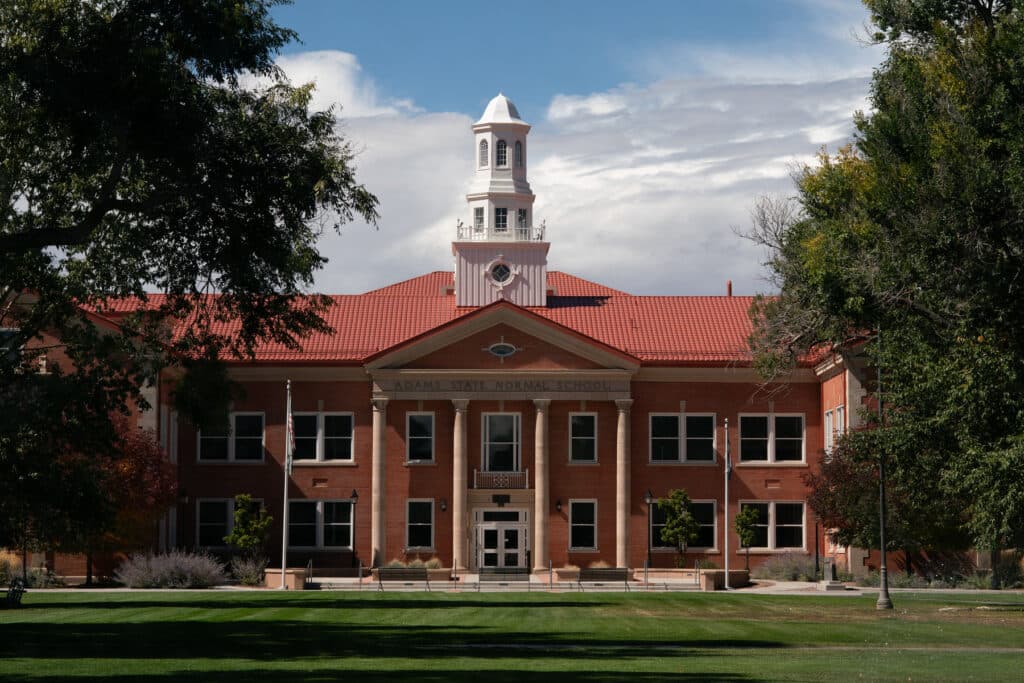
Warner: And what does that mean for families?
Tandberg: Well, fortunately, we were able to allocate all the scholarship dollars before the funding was cut off. And that's really important for those students. But moving forward, they won't have the services and programming that they were expecting. And then come the next semester, there won't be that camp scholarship program either. And so we were one of the inaugural camp programs in the country.
Warner: Say more about who that serves. Put a finer point so we understand.
Tandberg: It is a migrant farm worker program. So a student that's had to move based on the ag calendar, if you will, to work and/or their parents who have migrated for agricultural work. And they tend to be low-income first-generation students who follow that calendar of agricultural work. It's not necessarily immigrants. And there is no race test, a white student, any race ethnicity, you know, it's just not a consideration.
Warner: And so that's just zeroed out.
Tandberg: Yep. Our program has been zeroed out. We filed an appeal, and the appeal was denied.
Warner: How many students is that usually?
Tandberg: It can range quite a bit. So we'll have some where we're in the twenties and some where we've had classes up to a hundred, and over the years we're probably talking thousands of students.

Warner: What's a piece of good news? You talked about hanging a lot on hope. Tell me some good news about Adam State.
Tandberg: Well, here's the thing: There is a significant amount of external challenges, but there is so much to celebrate and be proud about on campus. And so for the second year in a row, we had a near five percent increase in our enrollments, and that's on top of about 15 years where we had declining enrollments.
Warner: What changed?
Tandberg: Well, a lot of really hard work among the faculty and staff. First, there's the belief that we can bend the curve, and then there's the effort. It's the hardest thing to change a trajectory.
Warner: Is that more students than from the valley attending Adams? Are you seeing folks from outside the San Luis Valley?
Tandberg: It's both. So in 2022, when I came as my first year, it was interim presidency, we had the lowest enrollment on record of valley students, both as a count and a percent last fall. We recorded the highest level on record by count and percent. We increased it by 73 percent. It's absolutely amazing. And certainly some of the dip in the valley was COVID-related, but that recovery was not guaranteed. Nor to not only recover, but to exceed.
Warner: You have to convince the folks in your own backyard you're worth sticking around for.
Tandberg: Yeah, we do direct admissions of every graduating senior in the valley, meaning whether they plan to go to college, whether they ever thought of themselves as college material, they get a letter that says, “Congratulations, you've been admitted to Adams State. We want you.” And that has been a sea change for so many students, where in the valley we have some of the lowest educational attainment rates in the state. And I've had parents and grandparents stop me in the street or in meetings and say how much it meant to their kid and to themselves to receive that letter that effectively says, yes, you are college material and we want you. And not only that, we have the Adams Promise, where any student that comes from a family making $70,000 or less comes tuition-and-fees-free. And if they're from the valley, we'll give them extra money to help with some of the other costs. So we say, we want you and you can pay for it.
Warner: Just to be clear, anyone who graduates high school in the valley gets a letter that they have essentially been auto-enrolled.
Tandberg: Auto-enrolled. So they don't have to go through the traditional application process. They're just in.
Warner: Is that dangerous? Like, what if they're not, what happens if they aren't college material?
Tandberg: Well, we're open access. So you just simply need to graduate high school or get a GED effectively, and we enroll you, similar to, you know, some community colleges there. They're even more open than we are, but we never want to have a barrier between our valley kids and their dream of a university education. And so we've removed that and it's been pretty powerful.
Warner: Okay, before we go, is there an item you have in the president's house that was in the garage in the dormer above us?
Tandberg: Books. Yeah. Quite a few books. Yeah. I built my own little bookshelf. So once the faculty were like, “Hey, you're really smart,” I started acting smart. And so I would collect these used books from all over, and I built a little mini bookshelf full of books and then all in front of my little mattress on the floor was a stack of books. And yeah, I still have them. You know, at that time I read “Les Misérables,” I read “The Good Earth,” I read so much. I’d just sit there on a Sunday afternoon and read in my little garage space.
